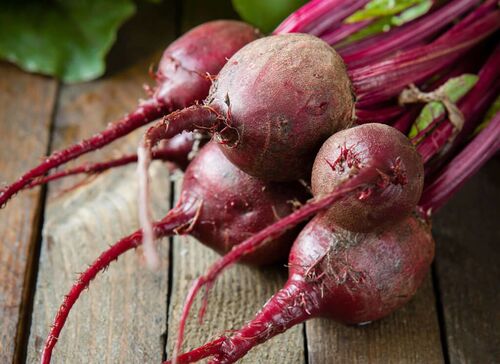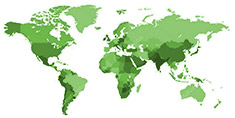Growing Beetroot

While beets and beet products are becoming more and more popular in the natural-foods market, the beet is anything but new. Records suggest people in ancient Babylon, Greece, and Rome enjoyed the root veggie, and archaeologists have found evidence of their use in certain parts of North Africa as well. Ancient civilizations originally prized the leaves and stalks of beets for culinary use, and used their roots as medicine.
Sowing beets
These veggies, along with carrots, spinach, and parsnips, do best when direct seeded ( planted straight into a garden space). In some cases, transplanting has been known to work. It works best if containers are deep and if seedlings are small. Soak the seeds in a jar or bowl of warm water for half an hour to an hour before planting. Place one or two seeds together into holes or ruts about 1/2 to 1/4 inches deep, and at least one inch away from each seed planting. If row planting, keep each row about four inches away from the other. Water thoroughly after planting so the topsoil has a good soak, but don’t go overboard and continue until the ground is waterlogged. Thin to three inches when plants are two to three inches tall.
Benefits Beets
Beets are incredibly nutritious. Both the roots and the leaves are an excellent source of antioxidants, minerals, and vitamin C. They also contain betaine, a compound that is essential for cardiovascular health. Eat them raw, cooked, pickled – you can even make beet chips! Most important, it is very easy to grow beets from seed.
Companion Planting
Beets add minerals to the soil. The greens are very good for the compost. Plant with bush beans, Brassicas, corn, garlic, kohlrabi, leeks, lettuce, and mint. Add cut mint leaves as a mulch for beets. Avoid planting beets near pole beans, as the nitrogen fixed by the beans may encourage leafy beet growth and diminished root development.
Harvesting beets
Beets are one of those magical vegetables that you can harvest and enjoy at any stage of growth. In fact, the sweetest garden beets are often much smaller than the beets you’d pick up from the grocery store. Anything over 2″ in diameter is a good time to pull up and enjoy. Try not to let your beets get larger than 3-4″ in diameter, that’s when they tend to get tough and start to lose their sweetness.
Harvesting beet greens
You can harvest beet greens early, just with a little caution! You want to leave enough greens to allow the plant to still pump energy to the root, so harvest one or two greens from each beet instead of lopping off all the greens from one root. When harvesting just beet greens, clip the larger, outside layers of leaves first, leaving the inner leaves intact to keep growing. You can also eat the seedlings. Beets are tasty from top to bottom, and the same is true of their microgreens.
Different types of beets
There are different types of beets. Round red beets, long red cylindrical shape beets, yellow and white beets and beets with white and red 'rings' on the inside. We have them all in our range and also 2 organic beet varieties!
Frequently Asked Questions
How many beets from one seed?
One beet plant does produce one beet root. But one beet seed may grow many beet plants. Beet seeds are actually seed clusters, with between 1 and 6 viable plants inside. You'll have to pick the hardiest and thin out his neighbors.
How often do you water a beet seed?
You want the soil at 3" deep to be slightly moist. If it's wet, hold off on watering. If it's dry, give them a shallow soak. If you don't get any rain, a light to moderate watering twice a week is usually enough.
When should I start my beet seeds?
You can sow beet seeds indoors from the end of February and directly in the ground from mid-April, several weeks before the last frost date.
How to harvest beets?
To harvest beets by hand, firmly grasp the area where the leaves meet the beet root and give a firm and steady pull until the beet root comes out of the ground. Digging is an alternative way of harvesting beets. Carefully dig around and below the growing beet, being careful not to slice through and then lift them out of the ground. After picking beets, wash them if they will soon be used. If beets will be stored for a length of time, place them in a dry, shady place until the soil on them has dried, then gently brush the dried soil off. Wash the beets right before using.
Types of beet seeds?
In our range we have 10 types of beet seeds:
- Beet Seeds Burpees Golden
- Beet Seeds Chioggia
- Beet seeds Cylindra
- Beet Seeds Egyptian Flat Round
- Beet Seeds Loki Kogel 5
- Beet Seeds Fire Red Bullet
- Easy vegetable garden Beetroot Bullet
- White Beet Seeds
- Organic Detroit dark red
- Organic beet seeds flatrounde



